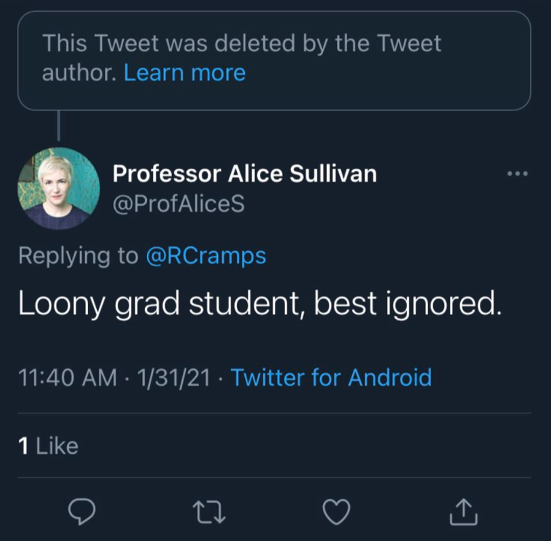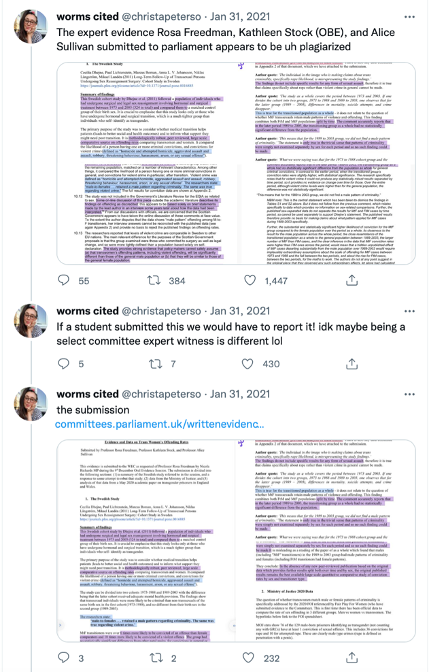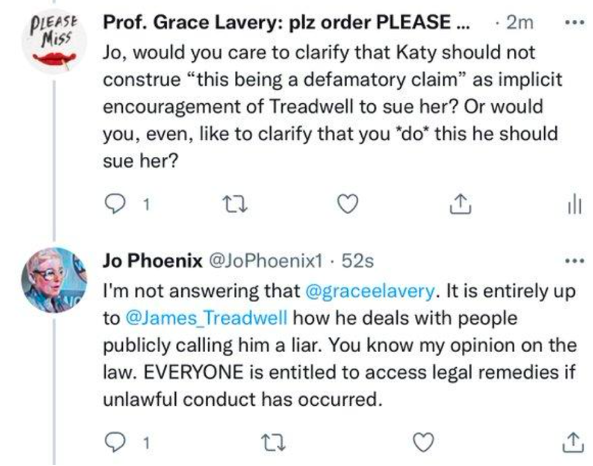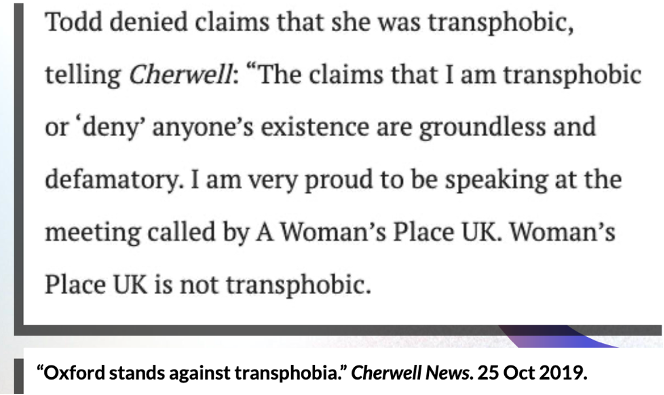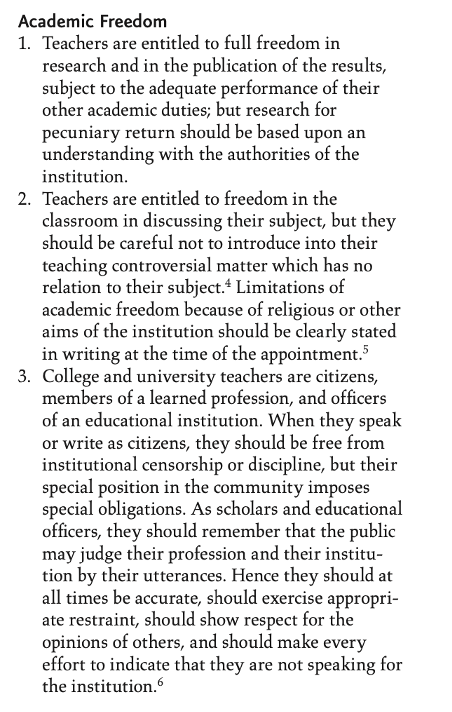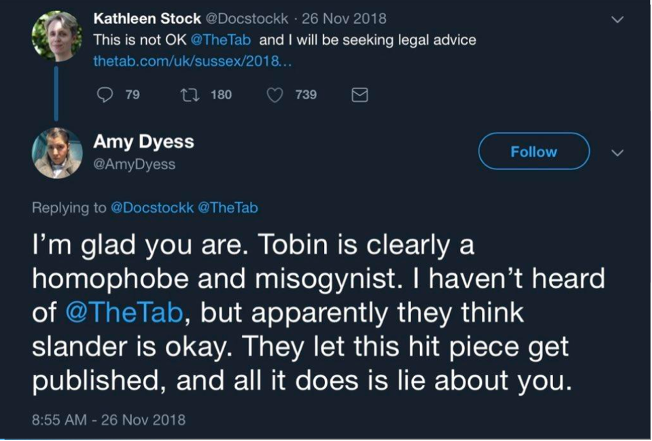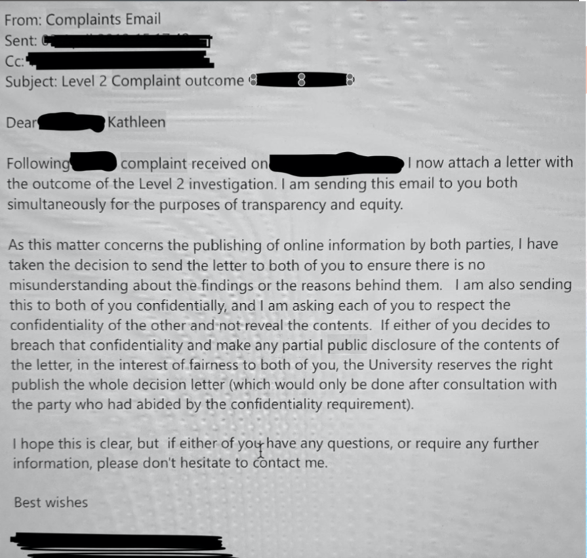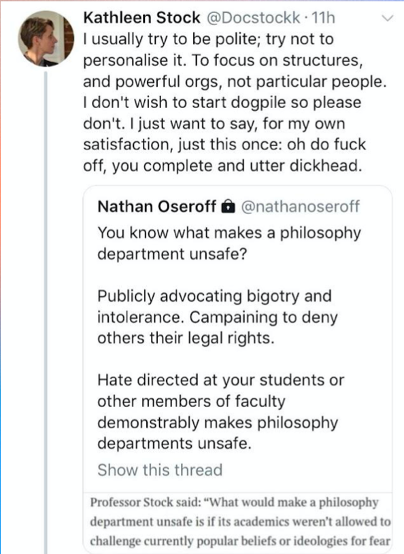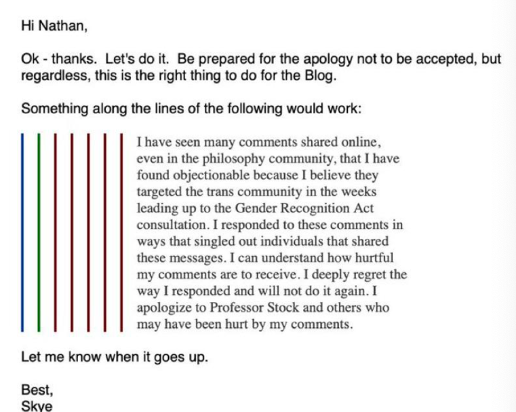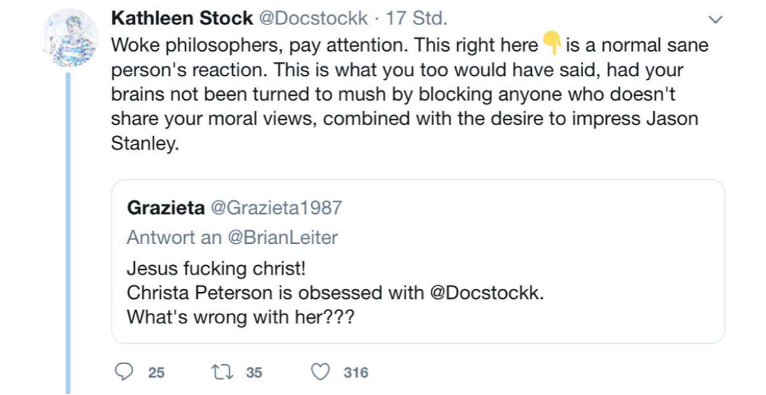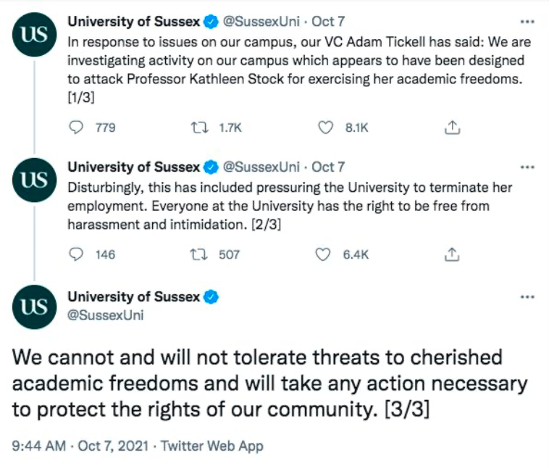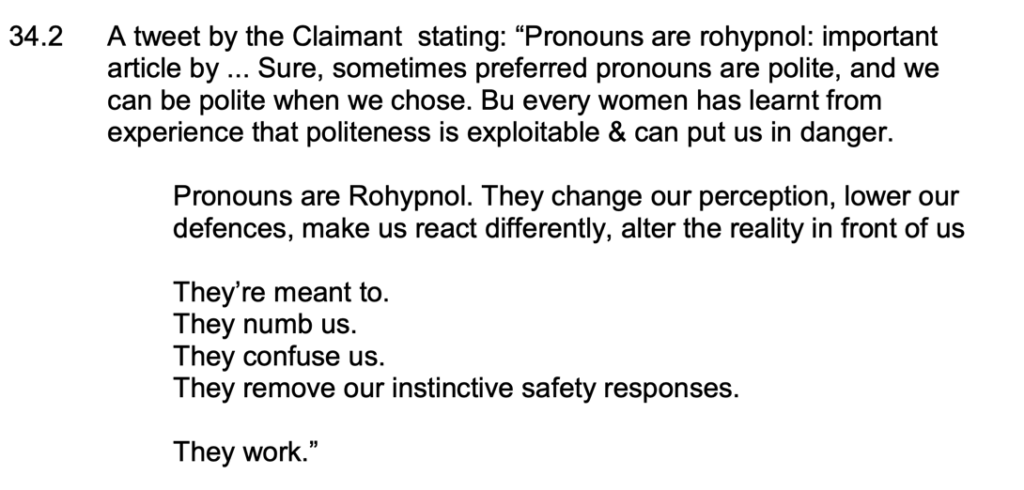The following is an essay originally commissioned by a UK broadsheet in August 2022.
Woman? Very simple, say those who like simple answers: She is a womb, an ovary; she is a female: this word is enough to define her.
— Simone de Beauvoir
With a pamphlet entitled “Children, Idiots, Women, and Minors” (1868), the Victorian polemicist Frances Power Cobbe embarked on a campaign to persuade the emerging movement for women’s rights that any attempt to define women on biological grounds would lead to idealism and abstraction. “We must not fall into the absurdity of supposing that all women can be adapted to one single type, or that we can talk about “Women,” (always to be written with a capital W) as if the same characteristics were to be found in every individual species.”1 Cobbe’s point was that the category “women” was a legal fiction, which empowered men to deprive a class of their fellow human beings of legal and civil rights. Like workers in Victorian factories, women may share little beyond their social rank––some, of course, may be slotted into patriarchy on the basis of their supposed fertility; while others could have been placed there to perform other kinds of reproductive labor. The connection between women was neither biological nor absolute, but derived from their position in society.
Cobbe’s idea was not uncontroversial at the time it was written. But by the end of the nineteenth century, it had become ubiquitous among women’s rights campaigners. Demands for women’s suffrage were rooted in the notion that “women” were not a naturally-occurring type, distinguishable from men on natural grounds, but simply a group of person that had been denied legal parity. Josephine Butler, an important early suffragist, wrote in 1869 that “the term ‘Women’ is a large and comprehensive one,” and argued that it is specifically in relation to work that the class that bears that title had come into being; accordingly, her collection of essays on the theme of women’s emancipation was not titled like John Stuart Mill’s rather grandiose The Subjection of Women, but in respect of the lives and labors of those whom Butler sought to uplift: Women’s Work and Women’s Culture.
In the post-war feminisms of the twentieth century, the notion that “women” was a social category, rather than a naturally-occurring type, became rather more fraught, not least because the institutionalization of evolutionary theory seemed to confirm that, though perhaps “man” and “woman” were social types, nonetheless “female” and “male” attributes were relatively similar across all mammalian species. So when Simone de Beauvoir famously argued that “one is not born, but rather becomes, a woman,” the object of her critique was not patriarchy, but biology. The following sentence reads: “No biological, psychological, or economic fate determines the figure that the human female presents in society.” Beauvoir’s feminism depended on a refusal of the notion that different sex characteristics produced differently-sexed organisms, and that while biological traits could be sexed, whole people can’t in any reliable or comprehensive way.
The existence of heterogenetic gametes alone does not necessarily mean there are two distinct sexes; the differentiation of reproductive cells often does not bring about a division of the species into two types: both can belong to the same individual. This is true of hermaphroditic species, so common in plants, and also in many invertebrates, among which are the annulates and mollusks. Reproduction takes place either by self-fertilization or by cross- fertilization. Some biologists use this fact to claim the justification of the established order. They consider gonochorism—that is, the system in which the different gonads belong to distinct individuals—as an improvement on hermaphroditism, realized by evolution; others, by contrast, consider gonochorism primitive: for those biologists, hermaphroditism would thus be its degeneration. In any case, these notions of superiority of one system over another involve highly contestable theories concerning evolution. All that can be affirmed with certainty is that these two means of reproduction coexist in nature, that they both perpetuate species, and that the heterogeneity of both gametes and gonad-producing organisms seems to be accidental. The differentiation of individuals into males and females thus occurs as an irreducible and contingent fact.
So, according to Beauvoir, sex is differentiable at the scale of the cell, but since there exist organisms in which sex-cells of both sexes are found, we therefore cannot use the fact of sexual dimorphism as a basis for the sexual classification of individuals or groups. It is not that Beauvoir refuses to talk about female organisms altogether––she does so frequently––it is that such organisms are inferred, rather than emerging into the world fully-formed. “Assigned at birth,” if one likes––or before, or after. Femaleness “irreducible and contingent,” in Beauvoir’s beautiful, enigmatic phrase.
Beauvoir’s answer to the apparent problem of evolutionary biology was widely embraced by feminists in Europe, the United States, and the United Kingdom, with some lesbian feminists going so far as to argue that the term “woman” was no longer relevant to feminist organizing; Monique Wittig, infamously, declared that “a lesbian is not a woman”––meaning that there was no basis, biological or social, on which those placed into sexual passivity and reproductive labor by compulsory heterosexuality could be said to share interests with lesbians, whose social roles are entirely different.
Towards the end of the century, a number of lesbian feminists looked to the emerging social norms of gay and lesbian communities to found new sexual and political taxonomies. Queer feminism, or queer theory, was developed on one front by lesbian feminists like Judith Butler and Gayle Rubin, and on the other by gay men like D. A. Miller and Leo Bersani: at its core was an attempt to displace the melancholia of heterosexuality from its position as the implied grounds of feminist organizing and community. If feminism was primarily about women’s work and heterosexual reproduction, what use was it to communities with no interest in having children, and in which biological sex was naturally no basis for the division of domestic labor. Judith Butler’s argument that biological sex was “discursive” translated into a psychoanalytic register what Beauvoir had pursued in terms of practical science; the pronouncement that a baby “is a boy,” for example, may be derived from a doctor’s observation of the baby’s sexual characteristics, but if one agrees with Beauvoir that sexual characteristics are no basis for designating the sex of an organism, than the doctor’s pronouncement, however consequential, is neither a natural nor an inevitable extrapolation of the data he (presumptively he) has observed.
Enter the gender critical activists. With the important exception of Julie Bindel, these are writers with relatively little training in feminist philosophy, but whose thought has become perhaps the dominant trend in contemporary British philosophy. Helen Joyce, a mathematics scholar who had a stint editing the finance pages of The Economist, embarks upon the reprint of her book Trans: Where Ideology Meets Reality with the following words:
The arguments in this book are based on facts that until recently were universally accepted: that humans cannot change sex; that males are on average much stronger than females and commit nearly all violent and sexual crime.
An emphasis on the novelty of the position Joyce calls “gender self-identification” underpins much that follows. It is as though Joyce has wandered into a classroom during the penultimate lecture of the course, declared that feminist philosophy as such is garbage, demanded the right to deliver the final lecture herself, and inexplicably been granted it. The only novelty in any of these books is the novel fact that those demanding “sex-based rights”––the notion that civil rights should be apportioned differently to members of different sex classes, the idea that Frances Power Cobbe, Josephine Butler, Margaret Oliphant, Simone de Beauvoir, and Judith Butler have consistently stood against for seventeen decades––believe themselves to be feminists. But the word is taken. They aren’t.
The word “reality” crops up in Kathleen Stock’s subtitle, too: Material Girls: Why Reality Matters for Feminism. A philosopher of literature, Stock’s first book Only Imagine: Fiction, Interpretation, and Imagination (2017) defends what she calls the principle of “extreme intentionalism”––the idea that a literary text means nothing more, less, or different from the intention of its author. Of course, it depends on what the word “means” means––an enthusiastic reader of French fiction, Stock knows that the French verb to mean, “vouloir dire,” translates literally as “to want to say.” But a sense that the Frenchies have been up to no good with the English language suffuses Stock’s critique of feminism, and slots Material Girls into the grand tradition of English critics of “postmodern” Gallic nonsense––heir not so much to Beauvoir, but to E. P. Thompson’s “The Poverty of Theory.”
For Stock too, the enemy of “reality” is “gender identity theory,” which she no more bothers to define than does Joyce. Still, it is novel (“in the first quarter of the twenty-first century––quite unexpectedly––a philosophical theory about something called ‘gender identity’ gripped public consciousness” [1]); it is “presented with a veneer of intellectual credibility” (7); and it is the object of “authoritarian, secretive attempts to railroad gender identity theory through parliaments” (8). Strange, given the ubiquity and ferocity of “gender identity theory,” that Stock cannot find a single philosophical source for this “philosophical idea.” The closest we get to a text worth disputing, of all things, is a pamphlet produced by the LGBT advocacy organization Stonewall––neither a governmental nor a scholarly entity––which argues that “a person’s innate sense of their own gender, whether male, female, or something else… may or may not correspond to the sex assigned at birth” (5). At other times, the object of Stock’s critique is “politicians, officials, and other public figures” (6), all unnamed, and the ungrateful brats from the Harry Potter movies “whose reputations were made in the films of [J. K.] Rowling’s books.”
But as becomes clear in the book’s “whistle-stop tour of big moments in the history of gender identity theory” (37), Stock’s actual argumentative opponent has a simpler name than that: it’s just feminism. She waves her hands to expelliarmus Beauvoir (“whether or not de Beauvoir actually intended the conceptual separation of being female from womanhood is moot. I don’t think she did.” [14]). Later, Stock assures us that “Beauvoir was fairly obviously talking only about females”––never mind that she appeared to say the exact opposite, that there is no such thing as “a female,” only female traits. Wittig warrants only a cheerful mystification of in intellectu and de re definitions of “Earth.” Judith Butler, of course, shows up only to “tell us gender is a performance”––a laughable misreading of Butler’s sense of the “performative” that snags many a first-year undergraduate, but should be within the grasp of the first philosopher since J. L. Austin to be entered into the Order of the British Empire. Other feminist texts––Julia Serano’s Whipping Girl, the Yogyakarta Principles, blog posts by anti-transphobic feminists associated with the Michigan Womyn’s Musical Festival––are narrated en route to the unhappy present, when the notion that roughly half of all people simply are male and the rest are female seems, at long last, to have lost some of its self-evidence. That notion, of course, Stock does not deign to defend; neither does Joyce, nor Bindel. Why bother? The gender critical writers position themselves somewhere less like the child from “The Emperor’s New Clothes” and more like Barry Goldwater: in your heart, you know they’re men.
The comparison with Goldwater is probably less flattering than these authors would choose for themselves, but the real model for the gender critical writers is the George Orwell of Nineteen Eighty-Four, a fondness they share with the Trumpist internet. Joyce puts “freedom is the freedom to say that two plus two make four” underneath an Audre Lorde quotation on the epigraph page of Trans. It’s a little odd to see him cast in the role of feminist, a role he certainly abjured, both in his stunningly sexist portrayal of women in his fiction (think of Julia in Nineteen Eighty-Four), and everywhere else––several book-length feminist critiques of Orwell have been written over the years, including Daphne Patai’s The Orwell Mystique: A Study in Male Ideology, published, as it goes, in 1984. If there’s a kinship deeper than the preference for simple sums, it might derive from Orwell’s legendary hatred of femininity. In the years before composing Nineteen Eighty-Four, Eric Arthur Blair kept a column in the commonsensically leftish journal Tribune, where he would frequently deal with the woman question, arguing that “the Modern Girl has been just the same for quite 2,000 years,” and that “one of the big failures in human history has been the age-long attempt to stop women painting their faces.” Make-up bad, nail-polish worse: “it is very unusual to meet a man who does not think painting your fingernails scarlet is a disgusting habit, but hundreds of thousands of women go on doing it all the same.”
In these books, when “make-up” comes up, the word “stereotype” is not far behind. Bindel, in particular, seems very sure that people would only wear make-up if compelled to do so by the patriarchy (the inverse of Orwell’s argument, which is that patriarchy fails to prevent women adorning themselves):
In the early second wave, feminists were criticized for attacking women who wanted to wear make-up, get married, or who chose to stay home and raise a family. But feminists were not and are not attacking other women for what they choose. Rather, we are asking, ‘What are the forces that shape choices?’
There is certainly something rousing about Bindel’s refusal of the Hobson’s choice of neoliberal post-feminism. Her chapter on those vicious “trans activists” possesses a title that typifies the gender critical rhetoric, either Orwellian plainspokenness or Goldwaterian obfuscation, depending on your opinion: “Saying It As It Is.” The chapter begins, curiously, with a narrative in which nobody says it as it is, concerning Bindel planning a visit to a Kenyan village of Umoja, from which men have been banned, when her editor calls her and tells her that the villagers have asked her not to attend because of her transphobia. The punchline: “It took me a full ten seconds to work out he was joking.” Later, it turns out that another feminist pointed out to Bindel that “50 per cent of transgender people experience sexual violence in their lifetime and trans woman of color in particular face an increased risk of this form of violence.” Bindel’s not having it: she emails the editor who had called her to guffaw with him about, I suppose, the rape of Black trans women. Why on earth Bindel chose to recount this anecdote as though it were anything other than an act of spectacular, discrediting cruelty, I have no idea. Nor do I know whether Umoja excludes trans women from its community, and, if so, on what basis––karyotype, inspection of genitals, hunch, etc. But this is what passes for gutsiness. A few years before she wrote Material Girls, Kathleen Stock wrote a blog post entitled “When Bindels speak,” in which she revels in her colleague’s “vividly Rabelaisian” prose; or Germaine Greer’s, which feels “like a bucket of cold salt water has been chucked over me after days of humid air.”
These books do have feminist forebears, in a strain of anti-trans feminism that emerged alongside and within the radical feminist movements of the 1960s and 1970s. For those feminists, no concession to trans women’s claims of personhood was necessary or tolerable: when Robin Morgan denounced Beth Elliott at the 1973 West Coast Lesbian Conference, she proclaimed her “an opportunist, an infiltrator, and a destroyer with the mentality of a rapist.” Conversely, Stock and Joyce go out of their way to insist upon “compassionate concessions that enable a suffering minority to live full lives, in safety and dignity” (Joyce, gag-inducing), and proclaim that “[trans people] deserve laws and policies that properly protect them from discrimination and violence” (Stock, pointedly refusing to explain what “discrimination” means). Still, these books seem unwilling to engage with, or even to acknowledge, the earlier generation of trans-exclusionary feminists. For Morgan and some other radical feminists, “woman” was a biological category; she would have signed off on Joyce’s statement that “sex is why women are oppressed, and gender is how women are oppressed.” (The notion that women are oppressed because of their sex, of course, contradicts left feminism’s treatment of women as a laboring class, and this distinction has remained controversial in debates between radical feminists and Marxist feminists.) Janice Raymond, infamously, wrote in 1979 that “the problem of transsexualism would best be served by morally mandating it out of existence.” Does Stock agree? She writes “any philosophical critiques that do sometimes (rarely) emerge––especially by non-trans academics––are regularly treated as equivalent to actual attacks on trans people.” So why not cite Janice Raymond or Robin Morgan? The commitment to novelty, to asserting the uniquely “postmodern” dimension of a question that long precedes modernism, stands out as perhaps the most ruthlessly incompetent dimension of this work.
It’s perhaps a little unfair to group these texts together. Material Girls is the work of a competent and minimally introspective antifeminist philosopher; Trans is an unruly set of incoherent polemics by a finance journalist, by far the least persuasive of the three; Feminism for Women is a reactionary feminist’s cri de coeur. Yet one finds odd connections between them: Bindel and Stock both think that the word “gender” is used as a “polite” euphemism for “sex”, which is a weird idea; the scapegoating of Judith Butler for queer and lesbian feminism is ubiquitous, though only in Trans does one suspect that the philosopher’s Jewishness might be part of the author’s concern. Joyce, rather worryingly, blames the rise of “gender self-identification” on George Soros and other “wealthy people” who “have shaped the global agenda,” language that wouldn’t look out of place on the Daily Stormer. The source for Joyce’s claim appears to have been Jennifer Bilek, with whom Joyce has scheduled events and tweeted bibliographical recommendations, and who has approvingly cited a video by the neo-Nazi Keith Woods advancing an anti-Semitic theory of transness. Joyce denies that she is anti-Semitic, and has threatened legal action against those who have found anti-Semitic elements in Trans. (Full disclosure: I withdrew from a scheduled public debate with Helen Joyce after I learned that the host she had chosen for the event had published articles I considered anti-Semitic.)
One point on where the three books differ, though, is whether or not it is ever possible for trans women to pass as women. Joyce thinks it’s very rare: “very few trans people ‘pass’ as their desired sex.” (Citation needed, as they say online.) Bindel, fittingly for a feminist, is more concerned with what “passes as feminism” than with who passes as a woman. Trans women seem frequently to pass in Material Girls, though of course Stock is careful to note that the true postmodern weirdos seem not to want to, “in line with Judith Butler’s ideas about gender as performance.” If they can, of course, then in order to exclude them from public spaces, one would need a method for examining all women who show up at the shelter, the prison, or Umoja. And one would also need a firm sense of exactly what one was looking for: genitals, chromosomes, and gametes all have a claim on the gender critical Real.
Feminism, from Frances Power Cobbe to the present, has a different answer: gender abolitionism. Gender abolitionists haven’t cared what a woman is, who wants to be one, or why; they have argued against any and all legal discrimination between men and women. Yes, this would mean the end of gender recognition certificates, as well as many other elements of legal segregation that we take for granted. But it would better reflect the reality that scientists and feminists have been insisting on since the 1860s: that “men” and “women” are inferred from sexual characteristics, and that some of those traits are and can be changed. Reality does matter for feminism; this kind of metaphysics really, really doesn’t.
Notes
- I am grateful to Katherine Hobbs for introducing me to Cobbe’s wonderfully engaging and complex feminism.
∿

